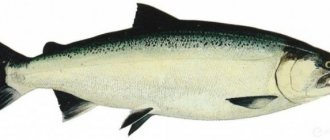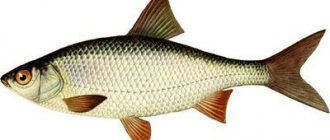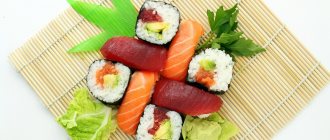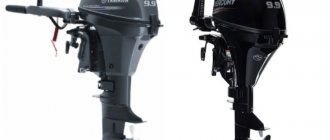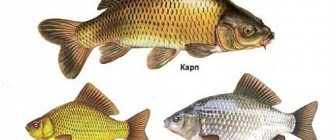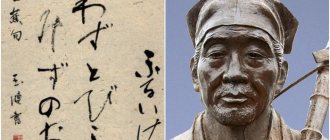Chinese, Koreans, Japanese... Few Europeans can accurately determine who is who. It is not at all clear how to distinguish them from each other. “Why is this so important,” the reader will think.
To the Caucasian race, all Asians look alike, and vice versa.
The relations between our peoples on the world political arena are becoming closer. International trade relations are also flourishing. In order to avoid getting into trouble when communicating with a representative of a particular nation, it would be nice to learn to understand their characteristics, which will help in the future to quickly distinguish one from another. This is what we will try to do.
Face
Knowledge of physiognomy will help to unravel the Asian phenomenon most accurately.
Koreans have a somewhat square face, characteristic angular features, a small narrow flattened nose, a miniature mouth, and a high forehead. The outline of the hairline frames the forehead like a rainbow. Eyebrows "house". Skin color is darker than others.
The Chinese face is round, often flat, the nose is wider, especially the wings of the nose. The mouth is a little bigger. High, wide cheekbones stand out. The eyebrows are slightly arched. Skin is lighter.
The Japanese have a more elongated face with a regular oval shape. Their features are softer. Accurate nose. Thin lips frame a normal-sized mouth. Eyebrows are often straight. The brightest of all the mentioned nationalities.
If in front of you is an Asian man with a doll-like face of unimaginable beauty; The standard that came out of the gloss is a Korean who resorted to medical correction. Today, North Korea ranks 1st in the world in plastic surgery. Everyone resorts to it, without gender differences.
IMPORTANT: Although white skin is held in high regard by everyone, there are representatives of certain subcultures in Japan who actively use solariums.
Appearance
Koreans, Chinese and Japanese also differ in appearance. If you see an Asian guy who looks like an anime character, then most likely he is Korean. Representatives of this country love to dress stylishly, dye their hair unusual colors and apply a thick layer of cosmetics. In addition, Koreans are not averse to undergoing plastic surgery, radically changing their appearance. In this state, plastic surgery is very developed, and it is believed that the best doctors are located there. Surgery to correct the shape of the eyes is especially popular. Korean women's eyes become wide and their eyelashes open, which gives them a certain cartoonish look.
Japanese teenagers also look bright and even provocative, but they only allow this until they graduate from a higher education institution. After this, they can no longer afford bright strands, provocative socks and short skirts. They change into formal uniforms and go to work in offices. The main colors of Japanese employees are blue, white, black, gray and beige. On vacation, they do not change these colors and are always in decent clothes. The Japanese are very conservative and do not allow themselves to relax for a minute.
The Chinese do not have any special preferences in clothing. They no longer wear khaki uniforms, but they also avoid flashy designer clothes. Chinese citizens prefer the usual European style. On vacation they like to dress in jeans and T-shirts. The most important thing for them is convenience.
Eyes
A great way to accurately identify these nationalities is to look closely at their eyes. “Yes, they are all narrow-eyed and it’s certainly not possible to learn to distinguish by their eyes,” many will say. Later you will be able to see that this is far from the case.
Representatives of China are identified by narrow eyes that fly up along the outer edge of the bridge of the nose like the wings of a bird. According to the general perception, they create a cat's face.
The Korean woman has larger ones, almond-shaped.
The Japanese woman’s “black eyes” are placed as if on a horizontal line, slightly protruding, framed on top by horizontal “dashes” of eyebrows.
Girls try to get closer to the appearance of Europeans by increasing the shape of their eyes, actively using decorative cosmetics: thick eyelashes or false eyelashes, often with a deviation from their growth line; eyeliner; tinted eyebrows.
Another characteristic feature of the Asian phenotype is the eyelids. They have a peculiar fold called epicanthus.
The difference between Chinese, Korean and Japanese: 9 differences with photos
Chinese, Koreans, Japanese... Few Europeans can accurately determine who is who. It is not at all clear how to distinguish them from each other. “Why is this so important,” the reader will think.
To the Caucasian race, all Asians look alike, and vice versa.
The relations between our peoples on the world political arena are becoming closer. International trade relations are also flourishing. In order to avoid getting into trouble when communicating with a representative of a particular nation, it would be nice to learn to understand their characteristics, which will help in the future to quickly distinguish one from another. This is what we will try to do.
Hairstyle
Judging by their hairstyle, Chinese women are more conservative and prefer to wear long straight hair; bowl cut haircuts or side-swept bangs are popular among guys.
Korean young men decide to experiment with their hair: they cut off their temples and create standard hairstyles. Girls love slightly bleached hair, different shades of chestnut, and try to give it volume. They also come with short hair.
Residents of Japan are the most advanced in style. Here experiments are carried out both with color (the greatest variety) and with haircuts. Wax is used liberally in shaping the style.
Makeup
A common feature is yellowish skin, white is popular. For this reason, all representatives of the fair sex try to whiten their faces and all visible areas of their skin in every possible way. Cosmetics with an active whitening effect are the most popular products that do not linger on the shelves of retail chains. Correcting the oval of the face using bronzer, sculptor and other various make-up tricks is popular.
Chinese women use little decorative cosmetics, Koreans use more, Japanese women use a lot of makeup for evening makeup. At traditional festivals you can often see “geisha makeup”.
The body is carefully protected from excessive insolation in order to prevent unwanted tanning and skin aging. The whitest-skinned Asians are the Japanese.
This photo of a Korean woman will allow you to compare the change in appearance. Cosmetics have the magical ability to transform narrow eyes.
Phenotype difference
0
Let's say right away: without practice, it is not easy to distinguish between Koreans, Chinese and Japanese. Even they themselves cannot always do this with 100% accuracy.
0
The Chinese nation is multi-ethnic, 56 different nationalities live there, and some of them are not at all similar to the Chinese in our minds. For example, the Uyghurs are more similar to the Tajiks. Therefore, it is simply impossible to derive any average type of Chinese phenotype.
0
Also, the problem of differentiation is complicated by the fact that the same Japanese islands experienced more than one wave of migration of both Chinese and Koreans, so in the course of history the phenotypes again underwent changes. However, some signs can still be identified. For example, it is believed that the faces of the Japanese are elongated and oval, the nose is more pronounced, and the eyes are large and wide. It is also believed that the Japanese have larger heads.
0
Japanese women often use a pale white complexion in their makeup and use active whitening products. It is believed that Japanese men and women are the whitest among Asians. Chinese women use cosmetics less than Japanese women. Among these three nations, the Chinese have the darkest skin, so they do not like to tan to make their skin lighter. Chinese faces are rounder than Japanese and Korean faces, and the Chinese usually have the widest cheekbones. Korean faces tend to be flat, with high, square cheekbones. Koreans also usually have thinner noses. There is also a figurative way of differentiating the Chinese and the Japanese. Thus, they say about the Chinese that they look like kittens, while the Japanese look like fish, that is, their eyes are a little bulging. It is also believed that Koreans can be distinguished by their small palms.
Body type
Many people believe that all Asians are similar in appearance and build: small and skinny, and in old age - crooked. This is wrong. They are different, but the percentage of overweight people is very small. The reason lies in a healthy diet. Fish, rice, seafood, seaweed - this is the usual Japanese diet. In these countries, fast food is not popular, and therefore there are practically no diseases associated with metabolic disorders.
Among today's youth there are many athletically built people. It is clear that they do not bypass gyms. Eastern martial arts, qigong and wushu practices help eliminate congestion both in individual organs and in the entire body, promoting the correct distribution of energy flows along the meridians. These factors contribute to achieving excellent health and well-being.
Russian K-POP Fans
Japanese, Chinese and Koreans: how to distinguish them from each other?
Each of us has found ourselves in a difficult situation when we see an Asian, especially in a big city. Many wondered, “Who is this? Chinese? Japanese? Or maybe Korean? And it would be impolite to come up and ask, or to look closely for a long time to find at least some clue. What's the difference between them? Many people often do not know that Chinese, Korean and Japanese are not the same languages. In this article we will try to lift the veil of secrecy.
We have all often heard from our adult generation, or people not versed in Asian culture, “They all look the same.” But they are very different from each other and not only in cultural characteristics, but in appearance. We will look at several similarities and differences between the three nationalities.
Similarities: 1. Skin
The statement that the Chinese, Japanese and Koreans have different skin colors is erroneous.
Their skin color and texture are similar, it’s just that in South Korea, for example, pale (European) skin is in fashion, and therefore guys and girls empty the shelves of cosmetic stores, buying whitening products and sunscreens, while in Japan some subcultures ( Gyaru, Kogyaru, Yamamba) on the contrary, spend a lot of time in the solarium, and in general white skin is held in high esteem. But if you look at ordinary middle-aged employees, you will notice that their skin color is the same.
2. Body structure
Many people believe that all Asians are small and thin, and in old age they also become crooked. This is again not true, Asians, like all people, can be fat, tall, athletic, slim or short. It’s just that the percentage of very overweight people in Asia is much lower than in America or Russia (due to the popularity of fast food and fatty foods in recent years, while Asian food is lower in calories). In terms of height, Koreans can be called the tallest of the three because Korean cuisine has always included nutritious meat on the menu, while in China and Japan they ate mainly fish, seafood and rice. And due to the fact that in the last 50 years the Japanese and Chinese began to constantly eat meat and their average height increased by almost 10-15 cm.
Differences: 1. Face
This is where the most difficult part begins, because there are differences in the structure of faces, but due to the development of plastic surgery, it is often difficult to tell which is which. Koreans have wide and slightly square faces, pronounced cheekbones, narrow eyes with raised corners and a single eyelid, sometimes they are born with a double eyelid, but most often the fold above the eye is the result of surgery. The nose and mouth are mostly small. The Chinese have round, flat faces, with flattened noses and large eyes (compared to Koreans). The eyelids are mostly single. The mouth is also small, but the lower lip is plump. As for the Japanese, their faces are elongated, their eyes are almond-shaped and the corners are downturned, their noses are high and flattened, their mouths are wide and their lips are thin. These descriptions can be attributed to purebred representatives of a particular nation, because due to mixing, the characteristic facial features change, even if the father is Japanese and the mother is Korean, the child will be something in between. Mestizos often successfully mix European and Asian features in their appearance.
From left to right: Koreans, Chinese, Japanese
2. Hairstyle
Hairstyle fashion in such close countries varies greatly. The Chinese pay tribute to European fashion, and shaved temples and combed hair to the side or back are popular among men. Sometimes, instead of a comb-over, they make small ponytails or buns at the back. Or medium-length hair (for men), combed back.
Chinese
Japanese
Korean guys prefer bowl hairstyles, with bangs in front of the eyes or combed to the side. Koreans prefer haircuts, while the Japanese love hairstyles with lots of wax (which can be bought at any hairdresser) and strands sticking out in different directions.
Korean
Each strand on the Japanese young guy’s head is neatly arranged and does not flutter in the wind. If you see an Asian guy with hair like a Final Fantasy character, know that he's Japanese. Japanese idols and visual performers love similar hairstyles. It’s more difficult with women, because European fashion has greatly influenced the hairstyles of Asian girls. Chinese girls love natural, straight and long hair. Of course, you can find girls with curly hair, dyed hair, and short hair, but most often Chinese women prefer simplicity.
Chinese
Japanese
Korean women like to dye their hair chestnut or dark brown, give their hair more volume and curl the ends a little. Also, recently, bob and bob haircuts, ashy color and slightly careless tufts of hair at the back of the head have come into fashion.
Korean
Japanese women are the most versatile in their hairstyles: here you have blond hair, buns, ponytails or braids, and a very short bob. And in Harajuku you can meet Japanese women with hair of all the colors of the rainbow.
3. Clothes
Everyone loves to dress fashionably, and the street fashion of South Korea, Japan and China is very rich. But you can still see some differences. The Chinese love simplicity of style and light formality (jackets, shirts, almost dress pants).
Chinese
Korean
The Japanese try to be either cute (girls wear white/pink dresses with stockings, loose clothes in warm colors and low heels or completely flat soles, and guys wear sweaters and turtlenecks and straight trousers), or, on the contrary, brutal (girls wear men's clothes, and guys wear bloomers with large sneakers and long T-shirts).
Japanese
Well, Harajuku street fashion is a completely separate topic, where you can meet anyone, from a visual kei fan in clingy leather pants with boots on an unrealistic platform to a cute lolita princess. Koreans prefer sexuality and daring. Girls try to wear heels, short skirts/shorts, and translucent things. Guys love either black, white and gray clothes, tight-fitting trousers, shirts or T-shirts and caps, or long jackets/sweaters and a more informal style. Koreans also love shapeless long coats and hats. Also, in any of these countries you can meet girls and guys in national costumes on holidays like Coming of Age Day, Lunar New Year, Chuseok, etc.
4. Makeup
This feature can only be attributed to girls, but Asian women also wear makeup differently.
Chinese
Japanese
The main goal of all Asian women when applying makeup is to enlarge their eyes. Chinese women love lush eyelashes and black pencil, sometimes shades of delicate colors, and slightly thick straight eyebrows. Naturally, Chinese women, like Koreans and Japanese women, take care of their skin, trying to make it paler. Avoid using bright lipsticks.
Korean
Korean women prefer invisible makeup, tinted eyelashes, white pencil and brown eyeshadow. They like to paint their lips with transparent or pink glosses, and their eyebrows are painted with a house. Japanese women are the most original: they enlarge their eyes with thick (sometimes false) eyelashes at the top and bottom, draw lines under the eyes first with a white pencil and then even lower with a black one, use eyelid glue, wear magnifying lenses, and some Harajuku models sculpt their eyelashes higher or below the lash line, which also makes the eyes appear larger. Japanese women also love blush and subtle glosses to create a kawaii look.
5. Behavior
Asians can be distinguished from each other not only by their appearance, but also by their manners. In Japan and Korea, the culture of bowing is highly developed. In Japan, it is mandatory to bow when meeting or meeting, both in formal settings and on the street. Friends are already more free in their behavior, either waving their hands when they meet, or nodding, as if greeting. Koreans behave the same way in a formal setting, but in an informal setting they are more likely to simply nod to a new person as a sign of respect. Foreigners can be introduced in our manner: with handshakes or hugs. The Chinese are more open and handshakes, even at business meetings, are commonplace.
Also, when communicating in public places, Koreans and Japanese try to speak quietly so as not to disturb others: they do not talk on the phone in transport and do not listen to loud music on headphones for the same reason. There is no such thing in China, so Chinese tourists are quite noisy.
6. Language
Well, the last and most striking feature is, of course, languages. First, I'll tell you a little about writing. In China, only hieroglyphs are used, there are no alphabets or alphabets.
Chinese letter
Korean letter
In Japan, as you know, there are hieroglyphs (kanji) and a syllabary with two types of writing (hiragana and katakana). In Korea, they use the alphabet (Hangul) and in some cases hieroglyphs (Hanja).
Japanese letter
But we will not focus on writing, because oral speech and its sound are important to us, because by it you can also distinguish representatives of different nationalities. The Chinese language has four tones, and the choice of tone determines the meaning of a word, so Chinese speech sounds very emotional and abrupt. Japanese speech, in turn, sounds measured and calm due to the lack of strong semantic stress in words, and the syllabic composition of words makes the language softer. The Korean language sounds harsh due to the abundance of letters “kh”, “chh”, “th” with a strong “x”. When Koreans talk to each other, it sometimes seems as if a fight is about to break out.
In this article I tried to touch on the most striking differences, and I hope this will help you avoid getting into trouble. This situation happened with my sensei when he was walking on Red Square and a guy came up to him and said: Konnichiwa (Japanese), Ni Hao (Chinese), Annyonghaseyo (Korean), because he didn’t know who was in front of him, and decided that's how to get out.
From https://konnichiwa.club/page/413/
Cloth
Chinese women treat their wardrobe without much fuss. In comparison with other representatives of the group in question, they are clearly losing. They form not entirely successful combinations both in color and style, easily mixing conflicting variations in one set. They don't really care about that. The favorite clothing of middle-aged Chinese men is cheap sportswear. Representatives of privileged circles of society dress much more elegantly, but compared to the general background they are few in number. Classics prevail in a business wardrobe.
The leaders in style and proper wardrobe formation are again the Japanese.
Their style is impeccable and consistent. They are recognizable. If a Japanese person wears a tracksuit, it will certainly be an expensive, branded one. Samurai know their worth. They are the most well-groomed among Asians.
In terms of clothing style, Koreans are a cross between the Chinese and Japanese. They dress comparatively better than the Chinese, but there is room for improvement. They give preference to sexuality, sometimes insolence appears. At national holidays, the folk style is in the lead.
Japanese
All my relationships with Japanese women can be described in two words: “simple” and “boring”. “Simple” - because Japanese women adore foreigners and making a girlfriend in Japan, if you don’t look and behave like a completely clinical fool, is an easy task. “Boring” - because Japanese women completely lack inner strength and the desire to show at least some initiative. They are very good, very flexible and affectionate, but you will make all the decisions both for yourself and “for you”.
On the one hand, this is an ideal relationship format for lovers of strict patriarchy, when the man is the big boss in the relationship and the leader, and the woman is always in the “follower” position. On the other hand, I have always been a supporter of liberal views on life and relationships, so the “leader-follower” format is not very suitable for me. I prefer when both partners in a relationship are equal, and there is no such thing when “the man decides what is right, the man knows best.” You can accuse me of feminism in the comments and tell me what a liberal I am, yeah.
Behavior
The Chinese differ most clearly from the general background. They are more unceremonious and emotional. Throwing a scandal in front of everyone, shedding a tear, posing as a victim of deception, or openly showering compliments on the first person they meet - that's all about them. In transport they behave less restrained, they tend to chat loudly among themselves or on the phone.
Answering the question: how do the Japanese differ from the Chinese in terms of behavioral characteristics is as easy as shelling pears. The Japanese are unobtrusive and somewhat aloof. They behave very dignified in public places, and are delicate in business relationships. It is not in their rules to organize public showdowns or conduct loud dialogues. They speak in a low voice, so their surroundings are always quiet. The Japanese do not interfere in other people's lives, they are correct. It makes no sense to even compare them according to this criterion with Koreans, for whom feigned politeness and politeness are typical. Behavior is often audience-oriented. There is no rigid behavioral line in communication; it changes, is not stable, and changeable.
Language
A significant criterion for the differences between the nationalities under consideration is the manner of speaking and speech background. The Chinese language is distinguished by a characteristic ascending and descending background sound (there are 4 of them). Changing intonation affects the semantic load. The speech sounds emotional, with background changes.
It is easy to distinguish the Japanese language - it sounds organic, without jerks or lunges. Monotonously polite notes of speech without stress and tonal jumps are comfortable for perception, speech is muffled.
The Korean language has many words with the combination of consonants “kh”, “th”, “chh”, which is why you involuntarily become wary if you accidentally witness their dialogue. For some reason it seems like they are constantly fighting. At the end of phrases they insert the same words - polite phrases that you can learn to distinguish.
Who is taller
Of the group under consideration, the Korean is tallest. The Chinese are much smaller in height, even squat, and many have a frail physique. The Japanese are a little taller, stronger and healthier. Many researchers attribute the reason to the daily diet of the troika. Koreans love meat, just like Mongolians. Just as you cannot force a Mongolian or a Korean not to eat meat, the Chinese and Japanese cannot be forced to eat seafood. This is understandable; the Mongolian lifestyle, as a nomad, fixed this gastronomic addiction almost at the genetic level. What about other Asians, what are the differences with Mongolian predilections? After the scientific community presented disappointing research results regarding their nutrition and growth, differences in nutrition with the latter began to gradually disappear. They also began to actively introduce meat products into the diet, so their height has increased noticeably in the last half century - by 10-15 cm. Now an outsider is unlikely to notice the difference in height between these nationalities. It remains to compare according to other criteria.
Japanese and Chinese physique
It is believed that the average Japanese person is taller than a Chinese person; the difference in height is up to 10 centimeters.
The natives of Japan have a more proportional physique. There are very few overweight people in the Land of the Rising Sun. As for the Chinese, by nature they are often short or average in height and have a thin build. However, in recent years, China has seen an increasing incidence of obesity. Most Chinese women can boast of very beautiful and slender legs. But Japanese women have problems with this. Interestingly, despite the natural curvature of their legs, many Japanese women enjoy wearing leg warmers and high socks.
Why do the Chinese have narrow eyes?
It is difficult to answer this question unambiguously, as well as why the moon is yellow or the watermelon is striped. There are many hypotheses on this matter. Let's try to solve the genetic mystery.
Asians' eyes are not so small; this visual perception is created due to the fact that they are located with a certain slope, and the upper eyelid has a characteristic structure in the form of an overhanging fold (epicanthus). The strong fatty layer surrounding the eyelids creates some swelling, also visually narrowing the incision, the eyes look like slits. This is a feature of the Mongoloid race, which includes the Chinese.
If you look at the origins, you will notice that the physiological characteristics have been refined over thousands of years and have a simple dependence on the natural conditions of the environment. Narrow eyes protected their owners from sandstorms, strong winds, and bright sun. Nowadays, this feature is perceived by many as a kind of “zest” that Nature itself endowed the Chinese with.
How to distinguish a Vietnamese from a Chinese
It is difficult to distinguish a Chinese from a Vietnamese, but it is possible. There are few significant differences. The Vietnamese are similar to the southern Chinese and have dark skin color. They have the same flat faces, short stature, and slightly narrower eye shape.
The skin of the Chinese has a yellowish tint.
Behavioral differences are also observed. The Vietnamese are distinguished by modesty and restraint, the Chinese behave more relaxed.
Greetings
No matter how much the inhabitants of China, Japan and Korea are similar in appearance, they all have different foundations in mentality and behavioral characteristics. So, all these nations attach importance to bowing when greeting, but they do it in different ways.
It is interesting that the Chinese population, which was previously very sensitive to bowing, is today gradually moving away from this tradition. Thus, the Chinese prefer to bow casually, and then only with their heads. Young people have completely abandoned this principle and simply shake hands. The Japanese and Koreans take bowing more seriously, bowing very diligently during meetings to express their gratitude. For them, a casual bow means disrespect.
Vietnamese girl
These criteria constitute a basic list of possible differences, but it is very conditional. Recently, there has been a massive assimilation of society. Due to the popularization of mixed marriages in our society, many boundaries and differences are gradually being erased. Narrow-eyed or not, we are all different in appearance, but each is unique in our own way. You should not be a supporter of the superiority of one people over others. The external signs of an individual are only his external distinctive feature. It is important to prioritize moral, cultural and other universal values that coexist in harmony with the universal ones. Respect for foreign culture and mentality, tolerance and cooperation are the urgent tasks of our time.
